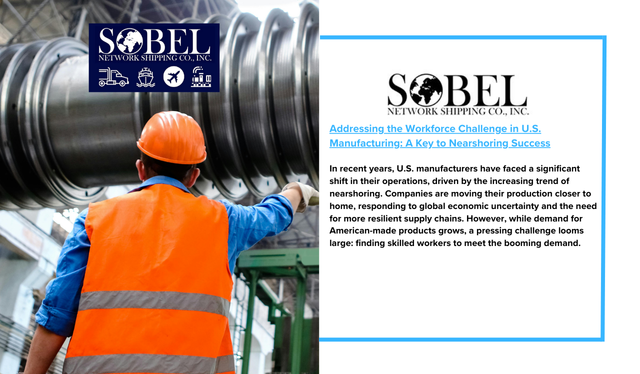In recent years, U.S. manufacturers have faced a significant shift in their operations, driven by the increasing trend of nearshoring. Companies are moving their production closer to home, responding to global economic uncertainty and the need for more resilient supply chains. However, while demand for American-made products grows, a pressing challenge looms large: finding skilled workers to meet the booming demand.
Manufacturing businesses across the country are grappling with labor shortages as they ramp up production to accommodate new orders. The issue is not limited to any single industry. From household appliance components to high-tech semiconductors, factories need workers to maintain and expand operations.
Recent data highlights the gap between job openings and hires in manufacturing, with tens of thousands of roles remaining unfilled each month. A national survey of manufacturers found that over 60% of employers cite attracting and retaining talent as a top priority. Forecasts suggest the sector will need to fill nearly 4 million roles over the next decade, a daunting task exacerbated by an aging workforce and a wave of retirements.
This labor shortage comes at a critical juncture for manufacturers, as many companies shift their supply chains closer to North America. The move toward nearshoring reflects a broader trend of decentralizing production from Asia to regional hubs. This strategy aims to shorten supply chains and reduce risks associated with trade wars, geopolitical conflicts, and supply disruptions.
Major corporations are investing heavily in North American production facilities. For example, machinery makers, furniture companies, and even toy manufacturers have announced plans for new factories and expanded operations in the U.S. These investments, supported by government incentives, are expected to fuel economic growth and create thousands of jobs in the coming years. However, the success of these initiatives depends on overcoming the labor shortage.
The challenges are not just quantitative but also perceptual. Many younger workers view factory jobs as outdated, associating them with unskilled and labor-intensive work. In reality, modern manufacturing has transformed dramatically. Today’s factories rely on high-tech machinery, automation, and skilled labor to operate efficiently. Efforts to change this outdated perception and promote manufacturing careers as rewarding, innovative, and technology-driven are crucial for addressing the talent gap.
As new facilities come online in the next few years, the need for skilled workers will become even more acute. Workforce development initiatives, education programs, and partnerships between industry and academic institutions are critical components of the solution. By addressing these workforce challenges, U.S. manufacturers can fully capitalize on the nearshoring boom, positioning themselves for long-term success and sustainability in a changing global economy.
The manufacturing sector is at a pivotal moment. The decisions made now about workforce development and supply chain strategy will shape the future of American manufacturing for decades to come.


